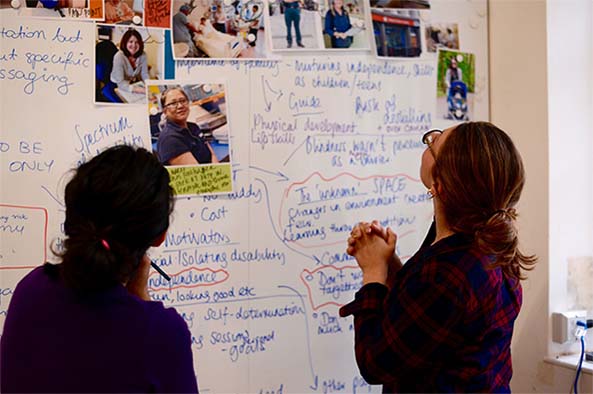
by Eddie Obeng — Sep 30, 2024
We all think innovation is important, so why is there relatively little of it around? In this Short Read, Eddie Obeng gives his recommendations for ways of overcoming risk in innovation. With reference to the different phases of design thinking, Eddie argues that new ideas can also mean good business.
—
Bringing ideas to life (profitably)
Do you believe that innovation is important? Do you think it’s crucial to the future of your organisation? Do you think it should be embedded in your products and services to give customers an outstanding experience?
You probably nodded as you read my questions. You’re thinking, “Of course we should. It’s obvious.” But if it’s obvious to you, surely it would be obvious to lots of other people, so every organisation would be drowning in innovation. It would be barely possible to have a conversation where an aspect of innovation wasn’t mentioned.
And yet the level of innovation in most organisations is low. An objective way to consider the innovation prowess of an organisation is to find its “return on innovation” (the cumulative spending on innovation divided by the cumulative returns over a period). In many industries this is low. Typically, between 2% and 5%.
What’s really obvious is that somehow things don’t add up. Traditionally, innovation was risky because it focused on what new ideas could be incorporated into existing product or service offers. Or it relied on “bets” based on hunches or assumptions. So experienced managers were risk-averse and avoided the uncertainty innovation brought.
Now, as our world gathers pace and increases in complexity and interdependence, we need to innovate. But we need a better way to do so.
Design thinking provides a systematic and fluid approach to accelerating innovation. It uses a process to achieve results. That process begins with a wide exploration of the user’s “ecosystem”, to find insights that are then used to frame challenges and make prototypes, which are narrated and applied as outcomes.
Even outside innovation, execution has a poor track record. So for design thinkers the later phases of make, narrate and apply – the “bringing ideas to life” phases – pose a real added risk.
But there are ways to reduce this risk. Here are six of my suggestions:
1. Improving an idea is more useful than eliminating it
Too often the find and frame phases focus on the user at the centre without placing enough emphasis on other influencers, from supporters to detractors. Improving ideas is crucial when the financial numbers don’t stack up.
How do you maintain the focus on creativity as you move into make, narrate and apply?
2. Ideas are not equal
I call these different starting points for ideas “sparqs”. The risks and challenges of an idea are influenced heavily by where the idea came from. For example, if you work in a corporation, you will have noticed the relative ease with which an idea “dreamed up” by the CEO can permeate the organisation, compared with getting a new idea accepted from outside the organisation.
“As our world increases in complexity and interdependence, we need to innovate. But we need a better way to do so.”
And yet, although the organisation readily accepts the CEO’s idea, the final customer may not. How do you ensure that your “sparq” has the best chance of success?
3. Co-creation overcomes resistance
Have you noticed how brilliant all your own ideas are? And how dreadful other people’s are? The funny thing is that they think the same thing.
There is a complex web of psychology you must master in order to engage the commitment of all the stakeholders in your innovation – from innovators to distributors to users. How do you engage for acceleration rather than alienate and get resistance?
4. Start making the business case early
Imagine trying to get a quote for a conference where you can’t decide the location, have no idea how many people will attend or how long it will last.
“Like a key for a lock, there is a best functionality, segment and scale to start from. And you have to find the right one for your idea.”
Building a business case for innovation is just like that. Unless you start making the business case early, how can you be certain your emotions, creativity and money are investments that will provide a future return?
5. Decide where to start
In the Dotcom era, the received wisdom was to go directly to global scale as quickly as possible. The intention was to dominate new markets, leaving little room for second-comers.
This strategy largely failed. So who should you start with? Which elements of functionality should you consider first? Like a key for a lock, there is a best functionality, segment and scale to start from. And you have to find the right one for your idea.
6. There is a best way to deliver each idea
When you travel to work, you have a pretty good idea of your end point and a clear idea of how you will get there. That is rarely the case with delivering innovation.
The goal or the method – or both – may be unclear. How does this influence the approach you use? How many prototypes should you create? And should you try them out in parallel or in sequence?
To conclude, innovation is important. It’s crucial to the future of your organisation. With design thinking, you can embed innovation in your products and services in order to make them better. And by doing so, you’ll engage your customers completely.

